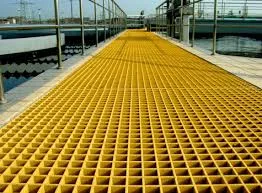
-
 Afrikaans
Afrikaans -
 Albanian
Albanian -
 Amharic
Amharic -
 Arabic
Arabic -
 Armenian
Armenian -
 Azerbaijani
Azerbaijani -
 Basque
Basque -
 Belarusian
Belarusian -
 Bengali
Bengali -
 Bosnian
Bosnian -
 Bulgarian
Bulgarian -
 Catalan
Catalan -
 Cebuano
Cebuano -
 China
China -
 China (Taiwan)
China (Taiwan) -
 Corsican
Corsican -
 Croatian
Croatian -
 Czech
Czech -
 Danish
Danish -
 Dutch
Dutch -
 English
English -
 Esperanto
Esperanto -
 Estonian
Estonian -
 Finnish
Finnish -
 French
French -
 Frisian
Frisian -
 Galician
Galician -
 Georgian
Georgian -
 German
German -
 Greek
Greek -
 Gujarati
Gujarati -
 Haitian Creole
Haitian Creole -
 hausa
hausa -
 hawaiian
hawaiian -
 Hebrew
Hebrew -
 Hindi
Hindi -
 Miao
Miao -
 Hungarian
Hungarian -
 Icelandic
Icelandic -
 igbo
igbo -
 Indonesian
Indonesian -
 irish
irish -
 Italian
Italian -
 Japanese
Japanese -
 Javanese
Javanese -
 Kannada
Kannada -
 kazakh
kazakh -
 Khmer
Khmer -
 Rwandese
Rwandese -
 Korean
Korean -
 Kurdish
Kurdish -
 Kyrgyz
Kyrgyz -
 Lao
Lao -
 Latin
Latin -
 Latvian
Latvian -
 Lithuanian
Lithuanian -
 Luxembourgish
Luxembourgish -
 Macedonian
Macedonian -
 Malgashi
Malgashi -
 Malay
Malay -
 Malayalam
Malayalam -
 Maltese
Maltese -
 Maori
Maori -
 Marathi
Marathi -
 Mongolian
Mongolian -
 Myanmar
Myanmar -
 Nepali
Nepali -
 Norwegian
Norwegian -
 Norwegian
Norwegian -
 Occitan
Occitan -
 Pashto
Pashto -
 Persian
Persian -
 Polish
Polish -
 Portuguese
Portuguese -
 Punjabi
Punjabi -
 Romanian
Romanian -
 Russian
Russian -
 Samoan
Samoan -
 Scottish Gaelic
Scottish Gaelic -
 Serbian
Serbian -
 Sesotho
Sesotho -
 Shona
Shona -
 Sindhi
Sindhi -
 Sinhala
Sinhala -
 Slovak
Slovak -
 Slovenian
Slovenian -
 Somali
Somali -
 Spanish
Spanish -
 Sundanese
Sundanese -
 Swahili
Swahili -
 Swedish
Swedish -
 Tagalog
Tagalog -
 Tajik
Tajik -
 Tamil
Tamil -
 Tatar
Tatar -
 Telugu
Telugu -
 Thai
Thai -
 Turkish
Turkish -
 Turkmen
Turkmen -
 Ukrainian
Ukrainian -
 Urdu
Urdu -
 Uighur
Uighur -
 Uzbek
Uzbek -
 Vietnamese
Vietnamese -
 Welsh
Welsh -
 Bantu
Bantu -
 Yiddish
Yiddish -
 Yoruba
Yoruba -
 Zulu
Zulu
frp pipes and fittings
FRP Pipes and Fittings A Comprehensive Overview
Fiberglass Reinforced Plastic (FRP) pipes and fittings have emerged as a versatile and durable solution for various industrial applications. These composite materials consist of a thermosetting resin reinforced with fiberglass, providing an excellent combination of strength, lightweight properties, and resistance to corrosive environments. This article explores the features, benefits, and applications of FRP pipes and fittings.
FRP Pipes and Fittings A Comprehensive Overview
The lightweight nature of FRP materials simplifies transportation and installation processes. FRP pipes are significantly lighter than their metal counterparts, which enables easier handling and installation in challenging locations. This property not only reduces labor costs but also minimizes the structural support requirements, making it feasible to use these pipes in a broader range of projects.
frp pipes and fittings

Moreover, FRP pipes and fittings are designed to provide exceptional mechanical properties, including high tensile strength and impact resistance. These characteristics ensure that they can endure high pressures and temperatures, catering to various sectors, such as water treatment, power generation, and industrial manufacturing. The versatility of FRP allows for customized solutions tailored to specific application needs, including custom diameters and shapes.
Another noteworthy aspect of FRP pipes and fittings is their low thermal conductivity. This property helps in maintaining the temperature of the transported fluids, making them suitable for applications involving hot or cold substances. Additionally, the smooth internal surface of FRP pipes minimizes friction loss, promoting efficient fluid flow.
In terms of environmental impact, FRP materials are a sustainable option. They can be manufactured using recycled materials and are themselves recyclable, contributing to a reduced carbon footprint. This eco-friendly aspect aligns with the growing emphasis on sustainability in modern industrial practices.
In conclusion, FRP pipes and fittings offer a robust, lightweight, and corrosion-resistant solution for various applications across multiple industries. Their unique properties facilitate efficient operations while ensuring longevity and environmental sustainability. As industries continue to evolve, the adoption of FRP technology is poised to grow, becoming an integral part of infrastructure development worldwide.
Latest news
-
Exploring the Benefits of Top Hammer Drifter Rods for Enhanced Drilling PerformanceNewsJun.10,2025
-
High-Precision Fiberglass Winding Machine for GRP/FRP Pipe Production – Reliable & Efficient SolutionsNewsJun.10,2025
-
FRP Pipes & Fittings for Shipbuilding - Corrosion-Resistant & LightweightNewsJun.09,2025
-
Premium FRP Flooring Solutions Durable & Slip-ResistantNewsJun.09,2025
-
Premium Fiberglass Rectangular Tanks Durable & Lightweight SolutionNewsJun.09,2025
-
Tapered Drill String Design Guide Durable Performance & UsesNewsJun.09,2025









